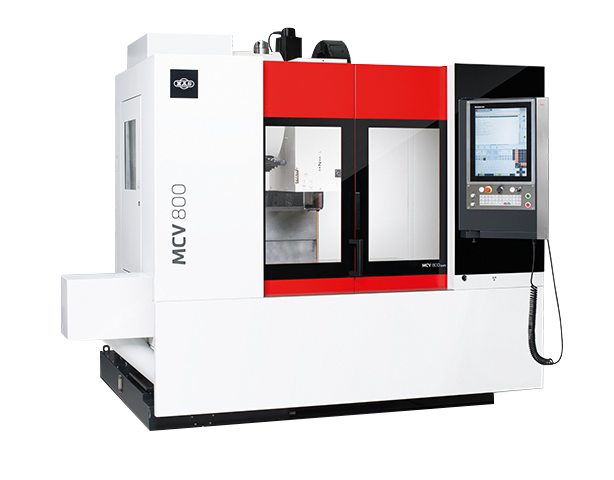Thought-provoking news from the world of machining and robotics
Thought-provoking News from the World of Machining and Robotics
Technology has revolutionized various industries, and the world of machining and robotics is no exception. From precision engineering to automated assembly lines, the advancements in this field have brought significant progress, igniting curiosity and paving the way for thought-provoking developments. In this article, we delve into some of the most intriguing news and trends that are shaping the future of machining and robotics.
The Rise of Collaborative Robots
Collaborative robots, also known as cobots, have gained immense popularity in recent years. Unlike traditional industrial robots that operate in isolation, cobots are designed to work alongside humans, making them valuable assets in various industries. With their advanced sensors and programming, these robots can perform tasks with precision and efficiency while ensuring the safety of their human counterparts. From assisting in assembly and packaging to aiding in complex machining processes, cobots are transforming the way industries operate.
The Integration of Artificial Intelligence
Artificial Intelligence (AI) has made remarkable strides in recent years, and its integration into machining and robotics has unlocked endless possibilities. With AI algorithms, machines can now learn and adapt to new situations, enhancing their performance and efficiency. From predictive maintenance to real-time data analysis for process optimization, AI is driving significant advancements in machining and robotics. With machines becoming smarter and capable of making autonomous decisions, the future holds exciting prospects for this technology.
Advancements in Additive Manufacturing
Additive manufacturing, also known as 3D printing, has gained momentum in the machining industry. This revolutionary technology allows the creation of complex and customized parts with unparalleled precision. From rapid prototyping to on-demand production, additive manufacturing is transforming traditional machining processes. The ability to print intricate designs, reduce material waste, and accelerate production timelines has opened up new avenues for innovation and cost-effectiveness.
The Emergence of Digital Twins
Digital twins have emerged as a game-changer in the world of machining and robotics. A digital twin is a virtual replica of a physical machine or system, allowing engineers to simulate and optimize its performance. By leveraging real-time data and advanced modeling techniques, digital twins enable predictive maintenance, process optimization, and performance analysis. These digital replicas not only enhance machine efficiency but also help in identifying potential issues before they arise, saving both time and resources.
The Growing Importance of Cybersecurity
As machines and robotics become increasingly interconnected, the importance of cybersecurity cannot be overstated. With the rise of the Industrial Internet of Things (IIoT), the risk of cyber threats and attacks has also increased. Ensuring the security of data, networks, and systems is crucial to protect sensitive information and maintain smooth operations. As the industry progresses, cybersecurity measures must be continuously upgraded to stay one step ahead of potential vulnerabilities.
Robotics in Healthcare
Robots are revolutionizing the healthcare industry, playing a vital role in surgery, patient care, and rehabilitation. Surgical robots, for instance, assist surgeons in performing intricate procedures with enhanced precision and reduced invasiveness. Robotic exoskeletons aid in the rehabilitation of patients with mobility impairments, allowing them to regain strength and independence. With advancements in artificial intelligence and machine learning, the integration of robotics in healthcare is expected to grow exponentially, improving patient outcomes and revolutionizing medical practices.
Automation and the Future of Work
Automation has long been a topic of discussion when it comes to the future of work. While some fear job displacement, others anticipate the creation of new roles and opportunities. The reality lies somewhere in between. Automation in machining and robotics can eliminate repetitive tasks, freeing up human workers to focus on more complex and creative endeavors. It is crucial for industries to embrace this shift and invest in reskilling and upskilling their workforce to adapt to the evolving landscape.
Conclusion
The world of machining and robotics is evolving at a rapid pace, with new technologies and trends shaping its future. From collaborative robots and artificial intelligence to additive manufacturing and digital twins, these innovations are driving progress and transforming industries. With a strong focus on cybersecurity and the integration of robots in healthcare, the potential for advancements in this field is limitless. While automation brings forth new challenges, it also presents opportunities for human workers to excel in more meaningful and strategic roles. As we move forward, it is essential to embrace these changes, foster innovation, and continue exploring the exciting possibilities that lie ahead in machining and robotics.
FAQ
What are collaborative robots?
- Collaborative robots, also known as cobots, are robots that are designed to work alongside humans in various industries. They have advanced sensors and programming to perform tasks with precision while ensuring the safety of their human counterparts.
How is artificial intelligence integrated into machining and robotics?
- Artificial intelligence (AI) is integrated into machining and robotics through AI algorithms that allow machines to learn and adapt to new situations. This enhances their performance and efficiency, enabling predictive maintenance and real-time data analysis for process optimization.
What is additive manufacturing and how is it transforming traditional machining processes?
- Additive manufacturing, also known as 3D printing, is a revolutionary technology that allows the creation of complex and customized parts with precision. It reduces material waste, accelerates production timelines, and enables rapid prototyping and on-demand production, transforming traditional machining processes.
What are digital twins and how do they impact the world of machining and robotics?
- Digital twins are virtual replicas of physical machines or systems. They allow engineers to simulate and optimize the performance of these machines. Digital twins are a game-changer in machining and robotics as they enable engineers to leverage real-time data and make informed decisions for better performance and optimization.





